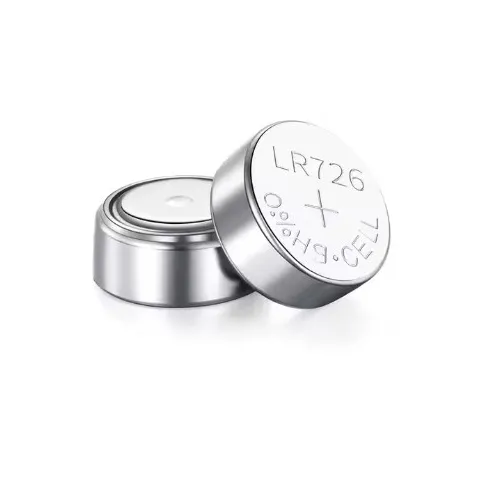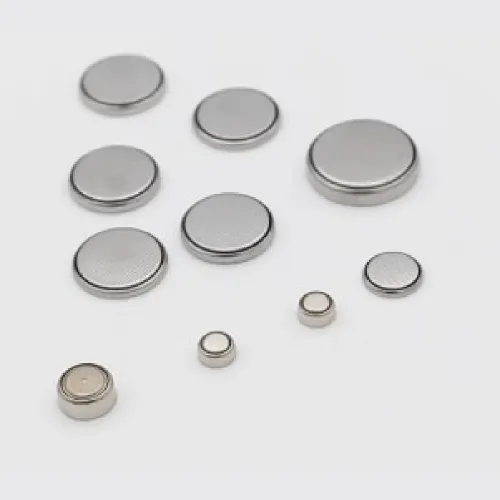Comparing Modern Compact Battery Technologies
In today’s rapidly advancing world of electronics, the performance and reliability of compact power sources have become more critical than ever. Devices ranging from wristwatches to hearing aids and small medical equipment all rely on tiny yet powerful energy cells. Among the most commonly used are alkaline button cells and lithium cells. Each has unique advantages depending on the application, performance requirements, and environmental conditions. Understanding how alkaline button cells differ from lithium cells helps users make better, longer-lasting decisions for their gadgets and tools.
Chemical Composition and Energy Density
Composition of Alkaline Button Cells
Alkaline button cells typically utilize a zinc anode and a manganese dioxide cathode. The electrolyte is usually potassium hydroxide, which enables efficient ion transfer within the cell. This chemical makeup contributes to their cost-effectiveness and consistent performance for low to moderate power requirements.
Composition of Lithium Cells
Lithium cells, in contrast, use lithium metal or lithium compounds as the anode, with various materials as the cathode, such as manganese dioxide or carbon monofluoride. This composition allows lithium cells to deliver significantly higher energy density and a longer operational life, especially in environments where consistent voltage and long-term reliability are essential.

Voltage Output and Power Delivery
Alkaline Button Cell Voltage Characteristics
Alkaline button cells typically provide a nominal voltage of 1.5V. While this is sufficient for many small electronics, their voltage tends to drop gradually over time, which may affect performance in sensitive devices that require a steady voltage supply.
Stable Output from Lithium Cells
Lithium cells offer a higher nominal voltage, usually around 3V, and maintain this level of output more consistently over their lifespan. This makes them ideal for applications requiring reliable performance, such as digital watches, medical sensors, and data loggers, where power fluctuations can lead to inaccuracies or device failure.
Shelf Life and Environmental Tolerance
Storage and Longevity of Alkaline Button Cells
Alkaline button cells generally have a shelf life of three to five years when stored in optimal conditions. Their performance can degrade when exposed to extreme temperatures or humidity. However, their wide availability and affordability make them a go-to solution for non-critical or frequently replaced electronics.
Extended Shelf Life of Lithium Cells
Lithium cells boast a significantly longer shelf life, often up to 10 years or more. They are more resistant to temperature fluctuations and offer better stability in both high and low-temperature environments. This trait is particularly useful in industrial or outdoor-use equipment that must endure various weather conditions without frequent battery replacements.
Cost Comparison and Application Scope
Affordability of Alkaline Button Cells
Alkaline button cells are widely known for their low cost, making them ideal for budget-conscious users or applications where battery replacement is routine. They are commonly found in toys, basic remotes, calculators, and similar devices where energy demands are minimal.
High Value of Lithium Cells for Performance Applications
Despite being more expensive, lithium cells deliver superior performance in applications that demand consistent voltage, extended battery life, and low maintenance. Their higher cost is often offset by reduced frequency of replacement and greater reliability over time, especially in mission-critical devices.
Environmental Impact and Disposal
Environmental Considerations of Alkaline Button Cells
While alkaline button cells are less toxic than older battery technologies like mercury-based options, they still contribute to landfill waste when disposed of improperly. Recycling options are available but are often underutilized due to convenience and lack of awareness.
Sustainable Use of Lithium Cells
Lithium cells also pose environmental concerns, especially related to lithium mining and disposal. However, many lithium cells are now designed to be rechargeable, reducing the overall number of cells used over time. As awareness grows, improved recycling technologies and take-back programs are making lithium cells a more sustainable choice.
Performance in High-Drain Devices
Limitations of Alkaline Button Cells
Alkaline button cells struggle in high-drain environments. Their internal resistance increases as they discharge, which can lead to voltage drops and reduced functionality in demanding devices. They are more suited to intermittent or low-drain use cases where power draw remains stable and minimal.
High-Drain Capability of Lithium Cells
Lithium cells outperform in high-drain conditions thanks to their low internal resistance and high energy density. Devices such as glucose monitors, advanced hearing aids, and wireless sensors benefit from the reliable power delivery provided by lithium cell technology, especially during extended usage.
Weight and Size Considerations
Compact Design of Alkaline Button Cells
Alkaline button cells are compact and lightweight, making them suitable for small devices where space is a premium. Their uniform size options, such as LR44 or AG13, ensure compatibility across a range of consumer gadgets.
Weight Efficiency of Lithium Cells
Lithium cells, while offering higher energy output, are typically lighter than their alkaline counterparts for the same capacity. This makes them advantageous in wearable tech and portable equipment where every gram counts. Their superior weight-to-energy ratio contributes to better ergonomic designs and user comfort.
Market Availability and Compatibility
Wide Availability of Alkaline Button Cells
One of the main strengths of alkaline button cells is their ubiquity. They are available in nearly every retail store, online platform, or convenience shop. This wide market reach ensures quick and easy replacements.
Broad Compatibility of Lithium Cells
Lithium cells are also widely available, though they may be slightly harder to source for some specific device formats. However, their compatibility with many modern digital and industrial devices continues to increase, as manufacturers lean towards better long-term performance.
Advancements in Both Technologies
Innovations in Alkaline Button Cell Engineering
Recent developments have improved the leakage resistance and storage performance of alkaline button cells. Enhanced sealing technologies and better material formulations now extend usable life and make these cells more reliable in portable devices.
Continued Evolution of Lithium Cell Technology
Lithium cell technology continues to evolve, with new generations offering enhanced safety, energy density, and rechargeability. These improvements keep lithium cells at the forefront of compact energy solutions, particularly in critical-use cases where reliability is key.
Frequently Asked Questions
What is the average shelf life of alkaline button cells?
The average shelf life of alkaline button cells is about three to five years when stored in a cool, dry environment.
Are lithium cells rechargeable?
Some lithium cells are designed to be rechargeable, especially lithium-ion varieties. However, many button-style lithium cells are not rechargeable.
Which type of battery is better for high-drain devices?
Lithium cells are generally better suited for high-drain devices due to their consistent voltage and higher energy output.
Are alkaline button cells more environmentally friendly?
Alkaline button cells are considered less harmful than older battery types but still require proper disposal or recycling to minimize environmental impact.
Table of Contents
- Comparing Modern Compact Battery Technologies
- Chemical Composition and Energy Density
- Voltage Output and Power Delivery
- Shelf Life and Environmental Tolerance
- Cost Comparison and Application Scope
- Environmental Impact and Disposal
- Performance in High-Drain Devices
- Weight and Size Considerations
- Market Availability and Compatibility
- Advancements in Both Technologies
- Frequently Asked Questions

